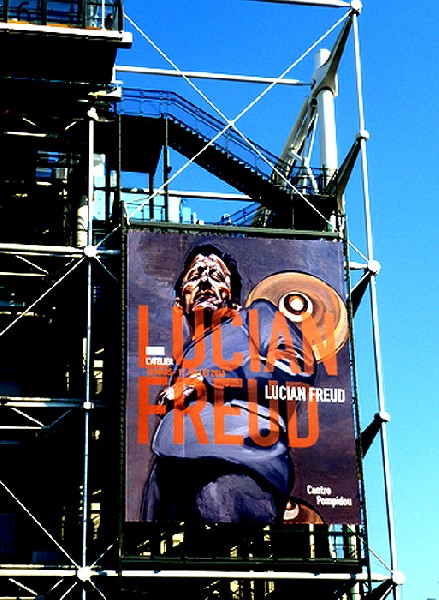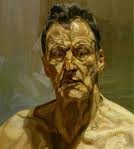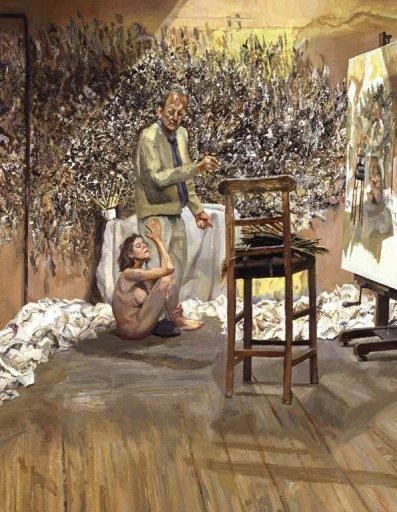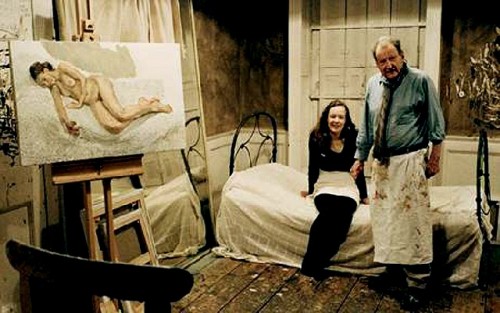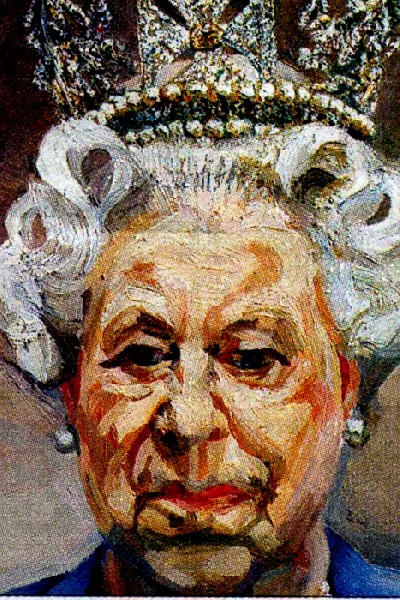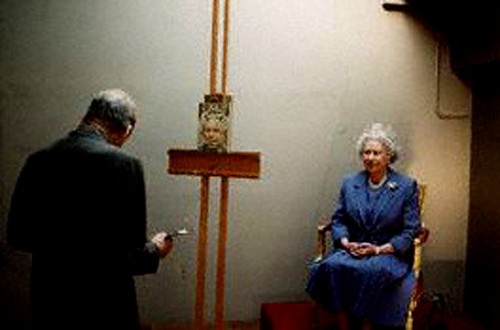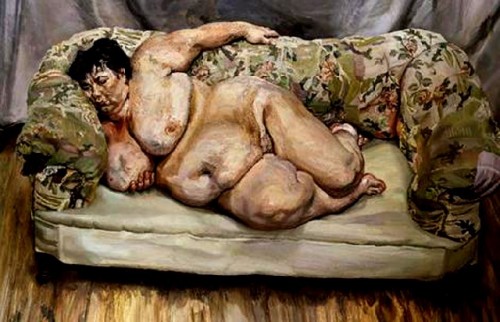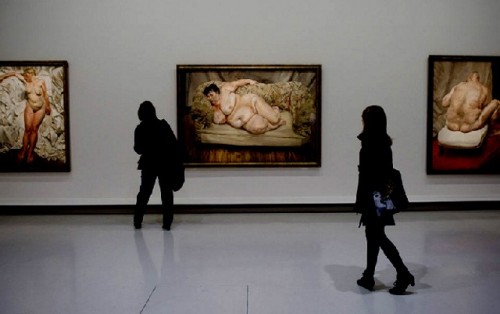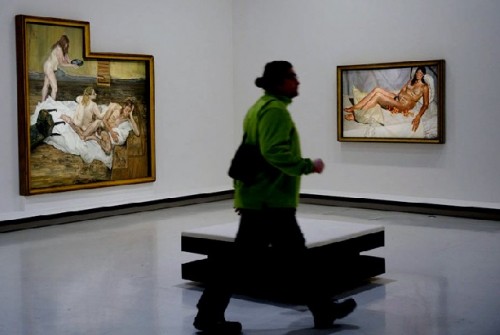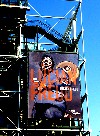The World of Lucian Freud
At The Centre Pompidou in Paris to May 24
By: Roger D'Hondt - Apr 29, 2010
Lucian Freud L'atelier
The Center Pompidou, Paris
To May 24, 2010
Now Paris's Centre Pompidou is certainly the place to be because of the retrospective exhibition of the 88-year-old British painter Lucian Freud. And is it worth it! Not so much to admire the pompous works of Freud but more for the world hidden behind the paintings and drawings. They are inseparable.
He paints majesticly and directly the world of people who stop at the edge of society. Whether one expects the figures who modeled for these paintings but even his immediate family! The backdrop for the paintings is the studio of the painter.
The exhibition is called L'atelier. This workshop presents an equally marginal habitat with thick mucous layers of paint on the walls and debris everywhere. It is clear that the painter of the Baroque decor of his studio "conscious" is preserved as habitat. They will see the spirit back into his work. Moreover, according to the paintings and a documentary film, the studio is situated in an abandoned factory near London where the junk and garbage have accumulated in the back . This is the dung of London.
Freud is a "traditional" painter, one might say. In many of his works, he portrays himself and winks back to masters like Cezanne and Picasso. He takes just the freedom of interpretation. The history of modern painting since early last century was dear to him. The decor of the studio complex, the mirror, draping the baroque, the desire for choice, controversial poses of naked people and so on.
You can see an interior where an older man in the foreground of the painting is seated on a sofa and reading a book. The background shows a young man in a chair apparently naked abreast to a child wrapped into one. The painting shows many interpretations, but it mainly refers to a contemporary world, which the man in the foreground, father or friend of the other, remains indifferent to the event behind him. It also refers to the many Madonnas with child.
Indifference is one of the themes in the work. Many of the paintings show the reflection of a society that still shares side affects. The people are overweight body shapes and explain himself let down by what happens to them. Individualistic lifestyles create a form of social decadence. Freud knows them in a way inaccessible to portray.
In the portraits, it is the painter's turn. He paints himself with two children in the background, or bare-chested with palette in hand. The painting "Naked Admirer" is a three dimensional scene. In the foreground sits naked on the floor a model of the painter. She looks at a painting in which she adopts the same pose. Standing next to the painter is apparently another canvas which captures the scene. It is a fairly complex but inviting confrontation. The composition is strong but there are clear signs present beyond the composition itself. Freud’s paintings do not just depend on chance, the snapshot. He deliberately chooses to position its themes.
The persons who figure in the paintings are close relatives and acquaintances of Freud. In some cases they are acquaintances from the cult (urele) world as the performer Divine. Freud's autobiographical series of paintings which also put down "their" life/world can be distracting. Also there are references to art history up for grabs.
Freud's work is catching on mainly because its crossing stands in front of the sleek formality that now dominates art. There are nasty confrontations off-road. This is further demonstrated by the fact that between the series is also a portrait of Queen Elizabeth. It also sticks out against the strict rules of conceptual art because in this context, Freud's work is conservative. The urge to emotionally bully has a strong presence in this work. He can hardly be described as a precursor but rather as an agitator for contemporary art.

